Serum and iodine for plants
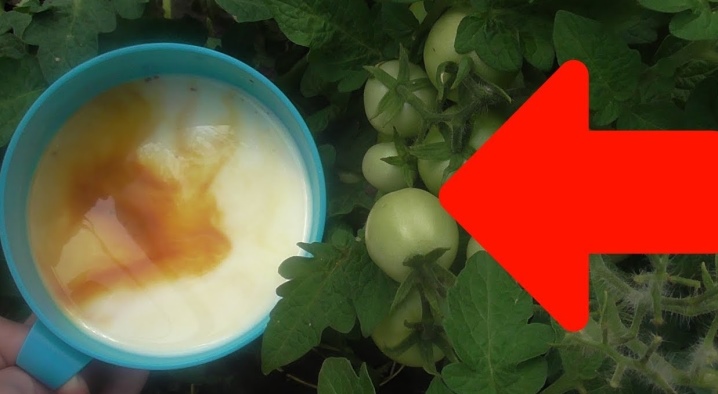
Any gardener knows that plants need constant and regular care. The modern market provides a wide range of growth stimulants and fertilizers. But proven folk remedies are often more effective and harmless. Many gardeners use the treatment of shrubs and plants with whey and an iodine compound. This is an affordable and budgetary tool. It helps to get rid of the difficulties that people have when growing plants.
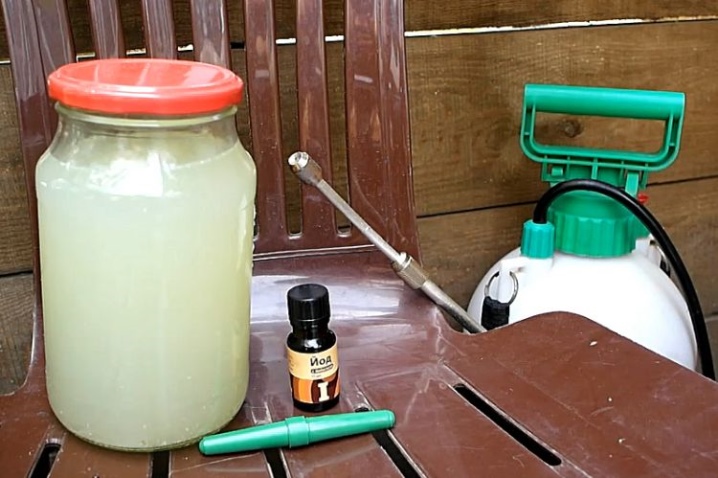
Properties and actions
Whey is a compound that is formed when fresh milk is sour. It is separated from milk during the preparation of yogurt and cottage cheese. Raw milk is used. It has a large number of nutrient compounds and trace elements. In pasteurized milk, the amount of amino acids and useful compounds is lower.

The product is prepared independently or purchased in the store.
The purchased version is completely ready to use. A useful fertilizer is effective due to the presence of a complex composition: a high amount of whey protein, minerals, vitamins, amino acids. The beneficial properties of whey include:
- the product is quickly absorbed into the soil and enriches it with useful compounds;
- is the prevention of bacterial and viral diseases;
- eliminates pests and parasitic insects in the ground;
- affects the yield of vegetables;
- is harmless;
- strengthens the ovaries;
- is a remedy for fungal infection of the plant;
- affects the stimulation of growth.
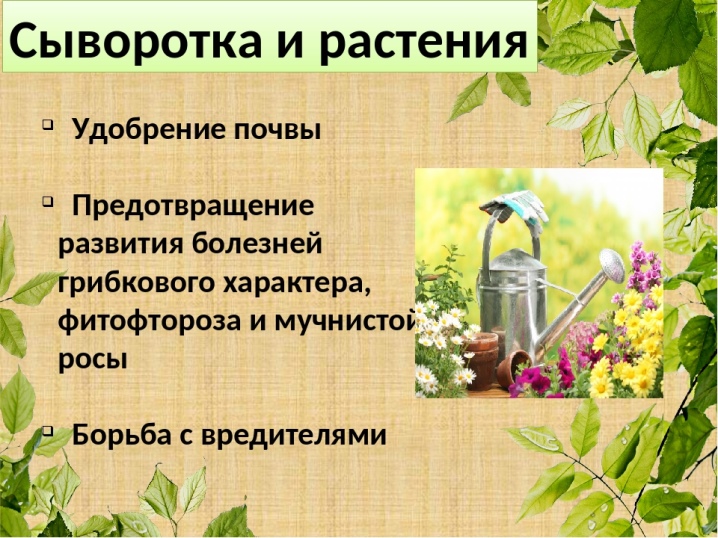
The serum contributes to the formation of a slight film on the surface of the leaves. This protects against the action of pests. Thus, an environmentally friendly culture is formed.

When iodine is added to the milk compound, the soil is further enriched and disinfected.
This dressing affects the quality of flowering plants. It is an immunomodulator for thickening the rhizome and stem.
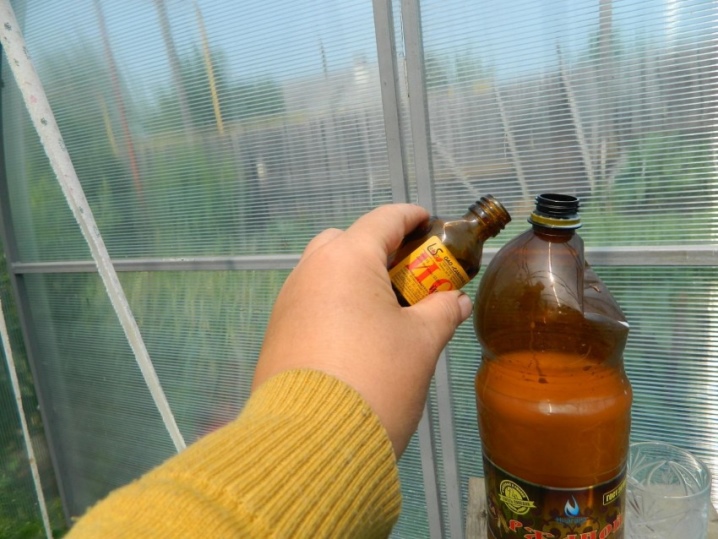
How to cook
The preparation of the solution is not difficult. Before creating a solution, gardeners remember that iodine contains alcohol in its composition. It can negatively affect the delicate leaves of plants and burn them. Therefore, it is very important to follow the proportions.
- Pure water is used to prepare the mixture. It must be free of chloride compounds. According to the characteristics, the main thing is warmth and softness. If this condition is not applied, the acidity of the entire compound may change. This will affect the acid-base balance and plant growth.
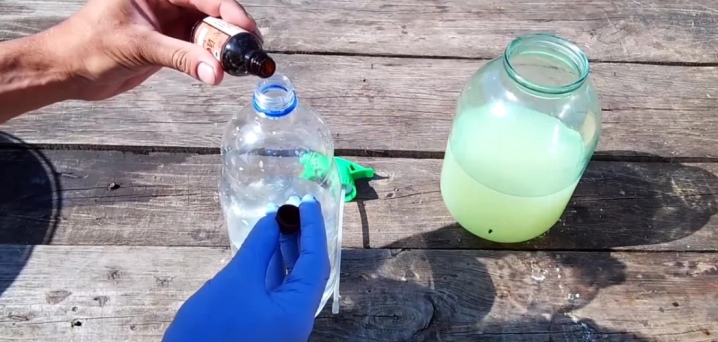
- If the top dressing is foliar, prepare a solution:
- mix 5 drops of iodine, 1 liter of milk compound and 3 liters of liquid;
- in order to create a more sticky consistency, add laundry soap or soap in a liquid state. Solid soap is kept in water in advance;
- the plant is treated with this solution.
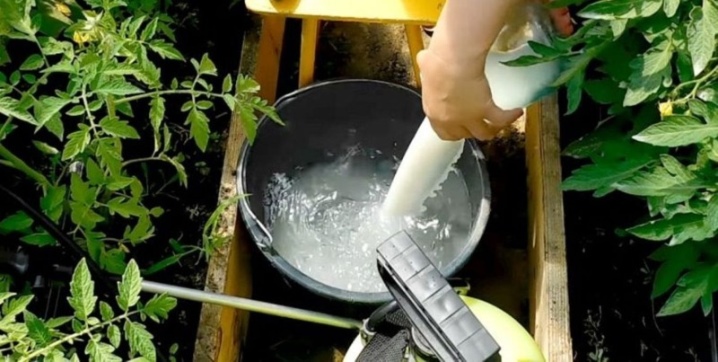
- Many people use a recipe based on a milk compound with the addition of iodide, ash and honey:
- mix 2 liters of whey, 10 drops of iodine, 200 grams of ash and 4 tbsp. spoons of honey;
- the solution is allowed to brew for 48 hours, it is in a deep container;
- they perform a procedure when the plant blooms: honey helps to attract bees, they pollinate the flowers and stimulate the ovaries, this remedy is used to mature the seeds.
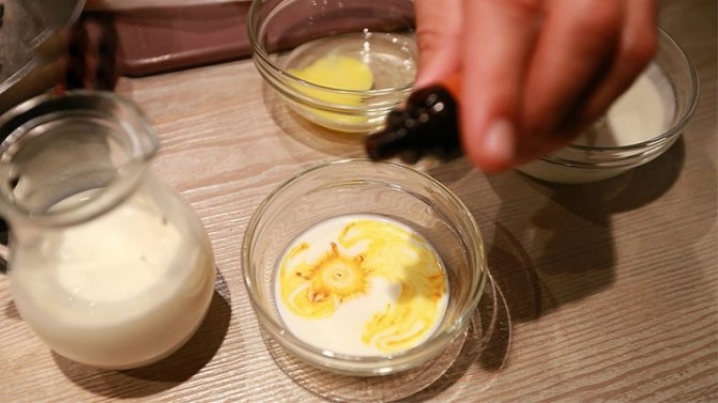
- If top dressing is applied at the root, prepare the following composition: combine 1 liter of serum with 10 liters of liquid and 10 drops of iodine. After the watering procedure, feeding is performed.Volume - 0.5 liters for one plant. To stimulate the growth of the culture, the compound is mixed with Fitosporin. It enhances the resistance of plants to harmful insects and pathogens.
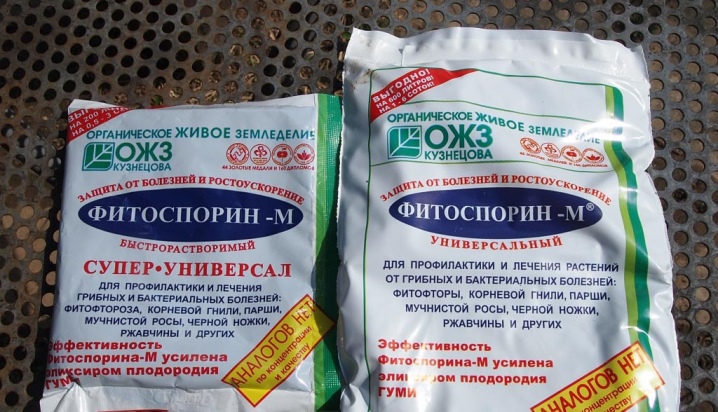
- To prevent the development of diseases in plants and faster growth, use 1 liter of milk whey, 10 to 15 drops of iodine, 0.5 tsp. boric acid. This mixture is stirred in 1 bucket of water. 2-3 sprays are carried out during the summer period. If the plant has rotting in the lower part, it is treated with this solution. The rot is reduced and gone.
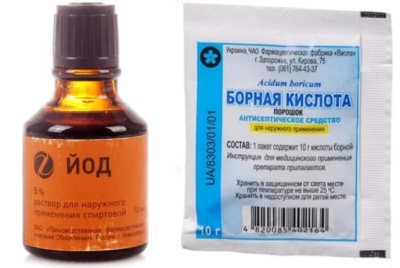
How to use
Certain activities will help to process the garden qualitatively.
- Before the fertilization procedure, the beds are weeded.
- If root feeding is planned, the plants are watered, trying not to get on the leaves and stems.
- The first procedure for spraying plants is performed 7 days later, after planting in open soil. In the future, they are sprayed with a frequency of 1 time in 14 days.
- If the dressing is foliar, the solution is filtered through cheesecloth and poured into a sprayer. Treat the stems and leaves on each side. The manipulation is carried out in the evening. The main thing is that the treated leaves are not exposed to direct UV rays. Windless, not rainy weather is considered the most favorable.
- The solution is applied to all areas of the plant. The main attention is paid to the lower zone of the leaves, since in this area the best absorption of nutrient compounds occurs.
- Not only plants are processed, but also the soil. Do not forget about the supports to which the plants are attached. They can be processed too.
- A fresh compound is used for the procedure. It is not recommended that it be infused for a long time.
- In the absence of a spray bottle, use a broom.
- Do not use the solution in its pure form. To feed the plant, the compound is diluted at a concentration of 1 to 10. About 1 liter of liquid is used per bush.
- Tomatoes are fed in early July. This allows you to supply vegetables with useful substances.


Caring for plants is not only watering, but also regular feeding. For the rapid growth of plants, nutrients and compounds are needed: calcium, amino acids, copper and phosphorus. These compounds are found in large quantities in whey.
For additional enrichment of plants, wood ash, iodine, boric acid are added to the whey.
The composition is used when the first shoots of plants appear. During this period, the young plant will receive a set of amino acid compounds. The seedlings will begin to actively grow, stretch in height.
Basic tips from gardeners will help you do everything right.
- When used outdoors, the fertilizer is applied at the root.
- Milk whey is diluted with water before being introduced into the soil. The water temperature should be at least 23 degrees. The total temperature of the solution is about 20 degrees.
- Processing is carried out at a distance of 0.5 meters from the stem.
- If the acidity of the soil is higher than the expected rate, it will rise after milk whey, this must be taken into account.
- Do not process dry soil. If the gardener does not have the opportunity to water, the feeding procedure is performed after the rain. The formed thin film is an excellent protection against adverse environmental factors.
- If feeding is carried out in greenhouse conditions, then you first need to spray the plants, and then ventilate the room.
If all the recommendations and tips are followed, even young gardeners will see a positive result and effectiveness from the use of whey and iodine for plants.

How to make a solution of serum and iodine for the prevention of plant phytophthora, you will learn in the next video.













The comment was sent successfully.